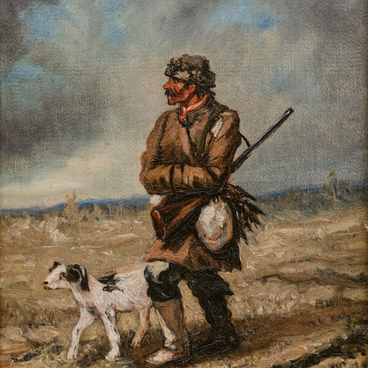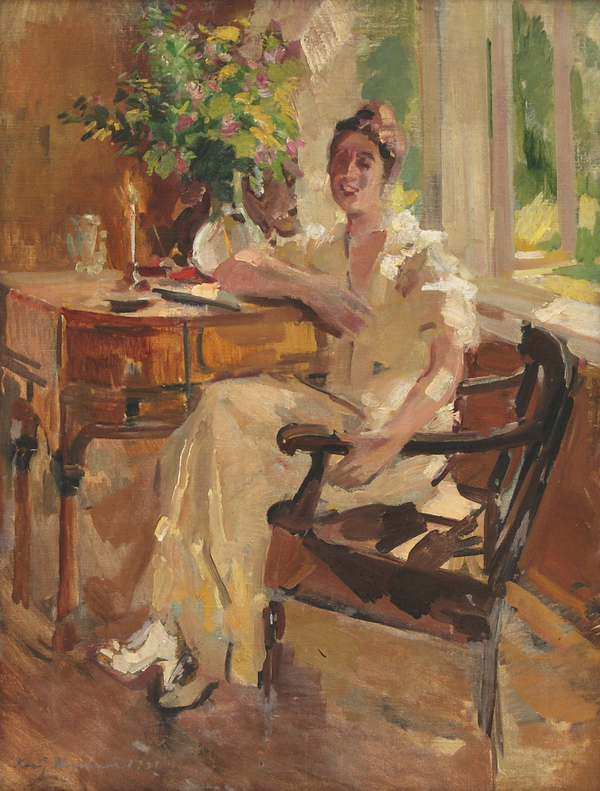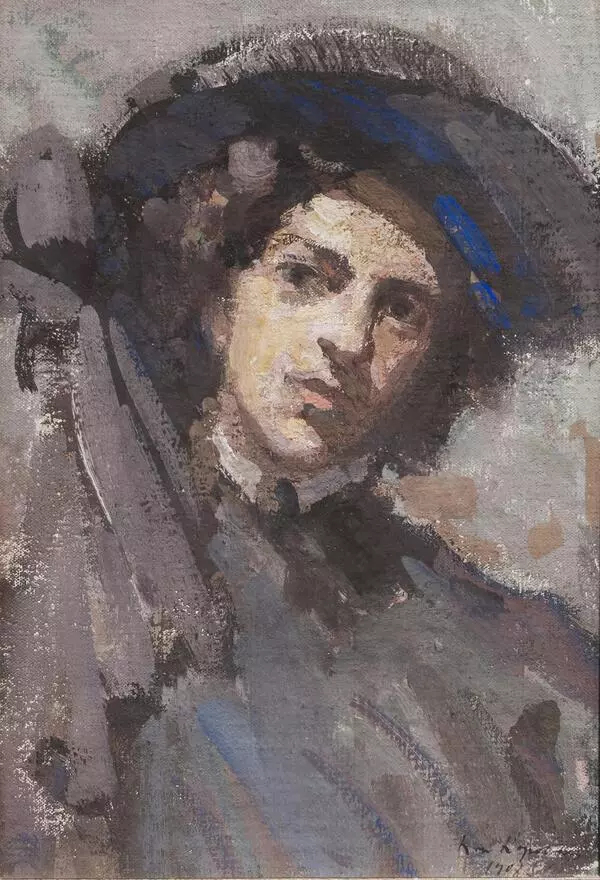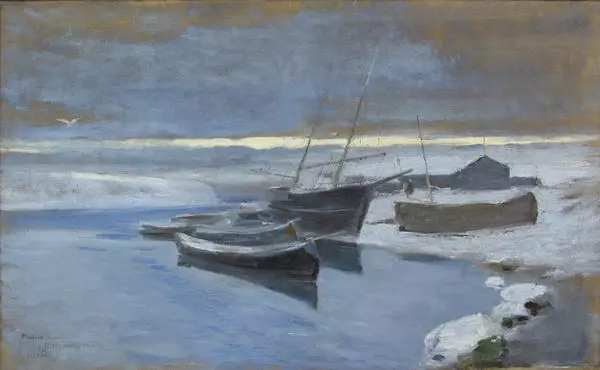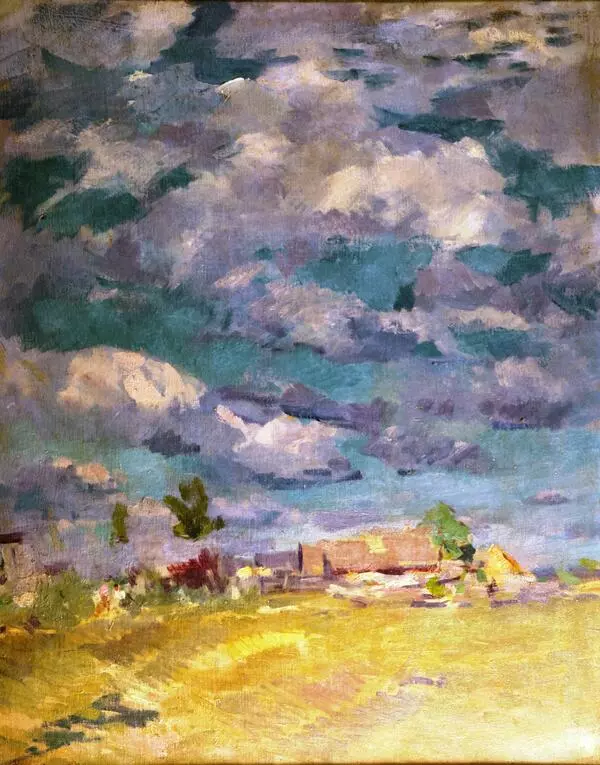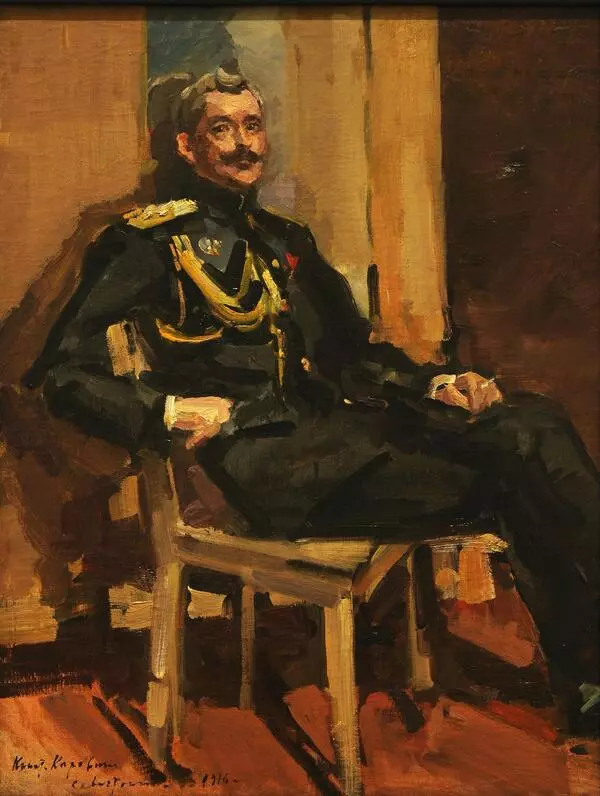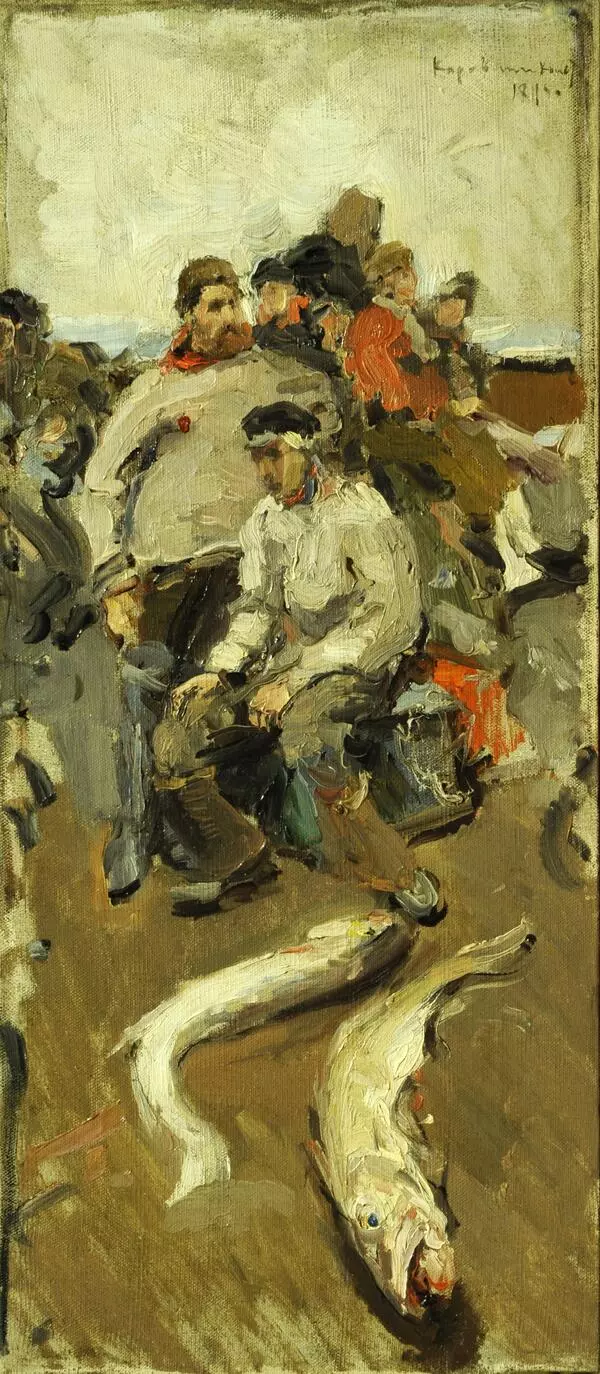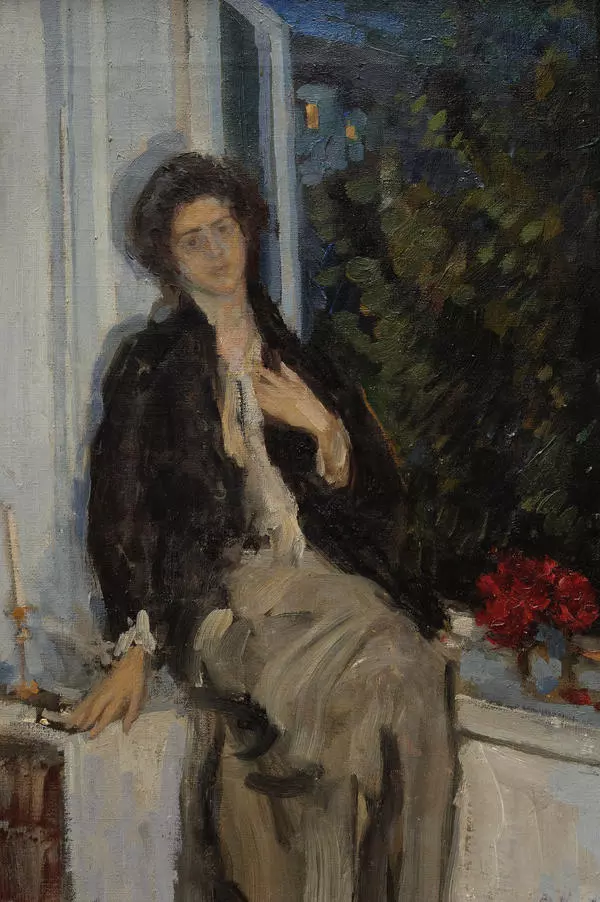Konstantin Alekseevich Korovin was born in 1861 into a merchant family in the city of Moscow. As a teenager he lived in the village of Bolshiye Mytishchi, where he began to notice the beauty of nature. His parents were fond of drawing.
At the age of 14, Konstantin Korovin entered the Architectural Department of the Moscow School of Painting, Sculpture and Architecture. A year later, he moved to the Landscape Class to the teacher, landscape painter, and a founding member of the Society for Travelling Art Exhibitions Alexey Kondratyevich Savrasov. The works of Konstantin Korovin of this period are marked by imitating the teacher. Before long, Konstantin Korovin joined the studio of the painter Vasily Polenov.
It was Vasily Dmitrievich who introduced the young artist to the art of the Impressionists. At the age of 22, Korovin became fascinated by this art movement. His first known work — “Portrait of a Chorus Girl” — was an Impressionist painting. The teachers of the school did not approve of the innovations, so the artist did not receive the title of class artist upon graduation.
In 1884, Konstantin Korovin became a member of the Abramtsevo art circle. Its founder was the entrepreneur and philanthropist Savva Ivanovich Mamontov. Konstantin Korovin revealed himself as a theater artist: he painted sets for performances, plays, and operas.
At the age of 31, Korovin went to France for a year to study modern art. On his return to Russia, he traveled with the painter Valentin Alexandrovich Serov around the north of the country. The artists visited Murmansk, Arkhangelsk, the banks of the Northern Dvina River and Novaya Zemlya. Impressed by the trip, the artist created his “northern” works.
In 1896, Korovin was commissioned by Savva Mamontov to design and decorate the pavilion “Far North” for the All-Russian Exhibition in Nizhny Novgorod.
In 1900, Korovin co-authored the Handicraft Department of the Russian pavilion for the World Exhibition in Paris. Together with the painter Nikolai Alexandrovich Klodt, he created 30 panels featuring Siberia, Central Asia and the Far North.
From the 1900s, the artist worked in different theaters, designing the sets for the productions of the Mariinsky Theater in St. Petersburg, the Bolshoi Theater in Moscow and the La Scala Theater in Milan.
Paris had a special place in Korovin’s work. His
many cityscapes of the French capital include: “Paris. Boulevard des
Capucines”, “Paris. Morning”, “Night Street. Paris” and others. The works of
the artist were a success in France, and he was awarded the title of Chevalier
of the Legion of Honor.

